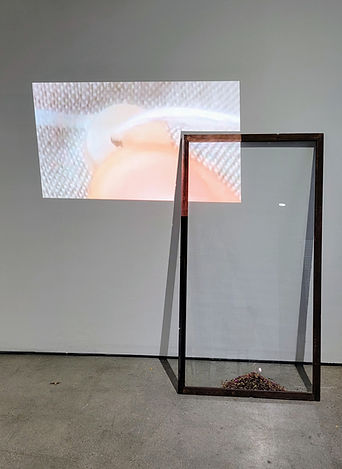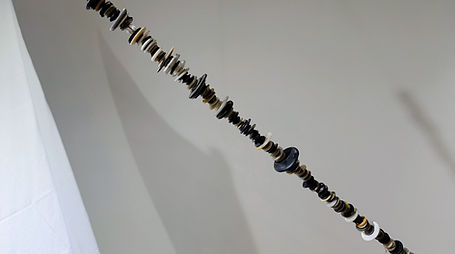HOMEMAKING: AN OVERTURE
2023 - 2024
In Homemaking: An Overture, Wagner foregrounded a distinct lexicon of materials, sounds, and images. The resulting environment, when viewed through a musical or literary lens, existed as though Wagner had composed an orchestral piece or poem suspended in space. In her use of dynamic, playful sculptural forms and bold poetics, the home emerged as a container or portal, a refuge or dreamspace, an elastic shelter for imagining, and at times, a ruin.

Defining homemaking as the practice of creating an architecture for life, Wagner offered a meditation on queering that practice. She probed the forms and acts customary to homemaking, turning them against dominant power to subvert norms and carve out space for their reimagining — space where a person might live. Homemaking became a means of revealing the constructed nature of what we may take as natural or given, as Wagner assembled objects and materials ranging from the organic and profoundly elemental to those of high artifice and mass production. Guided by feminist inquiry around labor and rest, care and emotional reproduction, interdependence, belonging, and joy, Wagner inverted and renegotiated codes and aesthetics historically attributed to womanhood and the home while making tentative proposals for deliquescing loss and grief into murmurs of hope and possibility.
Informed by her political identity determined by a regionally defined class subjectivity, Wagner aims to reclaim and embody a feminized, Appalachian “hillbilly” ingenuity. She resourcefully used cheap, free, or borrowed things, old things, homemade things — objects and materials generally accessible within the realm of the everyday — to interrogate notions of origin, memory, nostalgia, and place. Mundane and sleepy commonplace images and objects are amplified and estranged or made abject in order to awaken us to the home’s dialectics and contradictions, its intimacy versus its immensity, and its location as a site for the creation and destruction of quivering, personal worlds and cosmoses. Wagner employed sculptural modalities, such as suspension and compression, appealing to these stabilizing and destabilizing structures, in their precarity and provisionality, to index questions about the human’s certainty of being.








.jpg)





















Promotional video for HOMEMAKING: An Overture produced by the DSGN CLLTV gallery with special thanks to Jeremy Griffin. Music by Bana Haffar.









